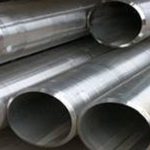Stainless steel is well recognized for its corrosion resistance, making it ideal for a wide range of applications. Stainless steel is available in a wide range of grades, allowing it to be helpful in various sectors. Many criteria are considered when deciding on the best quality 316 stainless steel tube to use. The primary criteria for stainless steels are corrosion-resistance for the application or environment in question. Strength and fabrication properties are also considered. There are about 60 different grades of stainless steel. The entire group, however, may be split into four metallurgical classes. Additional mechanical or physical attributes may need to be considered when deciding which grade to use to meet the overall service performance criteria.
Because of its great corrosion resistance, cleanliness, and strength, stainless steel is widely employed in applications ranging from medical devices to chemical storage to transportation and power generating. While steel comes in over 3,500 different grades, not all stainless steel grades are made equal.
How can you be sure you’re choosing the right grade for your needs when there are so many options?
- Select the correct metal for your application
Consider the circumstances your final product will experience to decide which steel grade will perform best in that environment. Stainless steel’s performance is harmed by extremely low pH, severe stresses and temperatures, and crevice corrosion. Steels of the austenitic T3XX class, such as the typical 316 and 304 alloys, maintain strength, hardness, and corrosion resistance throughout a wide temperature range.
The fundamental reason for adopting austenitic stainless grades is corrosion resistance. With the inclusion of molybdenum, the best quality 316 stainless steel tube can even withstand the chloride ions prevalent in marine and chemical processing applications. The best defense against corrosion, regardless of steel grade, is a high-quality structural design.
- Prioritize toughness, ductility, and strength.
Consider the following three mechanical qualities:
- Strength: a metal’s stress can resist before it is broken or deformed
- Ductility: A material’s capacity to change shapes, such as being dragged out into a wire or thread, without losing strength or breaking.
- Toughness: The capacity of a metal to deform and absorb energy before fracture
Stainless steel includes 10–30% chromium as an alloying element, which aids in corrosion resistance. Austenitic grades have the best toughness and ductility of all stainless steel grades due to the nickel addition. The grades with the highest chromium, molybdenum, and nickel are the most corrosion-resistant.
When picking a stainless steel grade, the alloy composition isn’t the only factor to consider; the material’s processing impacts its mechanical reaction. Steel’s overall quality is affected by the length of time it is maintained at different temperatures during its cooling process, as well as the total speed at which it is cooled.
While heat treatment can enhance the hardness of carbon steels, cold working processes such as rolling, bending, swaging, or drawing may harden austenitic stainless steels at temperatures below the recrystallization temperature. It’s important to keep in mind that increasing hardness through cold working procedures reduces other qualities such as elongation and impact resistance.
- Factor in form and process
Austenitic stainless steel comes in various shapes and sizes, including bars, wire, tubes, pipes, sheets, and plates; however, most of these items require extra shaping or machining before they can be utilized for their intended purpose.
Bending or coiling stainless steel tubes, for example, may need re-drawing, machining, welding, or end shaping. If your stainless steel is subjected to machining techniques such as CNC machining, drilling, reaming, bevel cutting, chamfering, knurling, or threading, pick a machining rate that reduces the danger of work hardening or a sulfur-containing “free machining” grade.
- Take into account your customers’ preferences
Stainless steel’s aesthetic look is important to many designers, whether it’s a gleaming, electropolished “bright” finish, a dull “pickled” finish, a matte surface polished to a certain RMS, or a light-absorbing black oxide coating. Any of these finishes, as well as passivation, can be applied to austenitic stainless steel grades.
Customers may also require certification to meet application-specific requirements. For boiler, superheater, and heat-exchanger tubes, ASTM A213 and A249 should be used, whereas ASTM A908 should be used for hard-drawn austenitic stainless steel industrial needle tubing. There are over 12,000 ASTM standards, each of which addresses a specific specification. Customers are aware of the technical requirements evaluated for chemical composition, heat treatment or temper, and other physical and mechanical characteristics.
- Keep track of the cost and availability of materials.
High-performance austenitic stainless steels are the most expensive stainless steels upfront, but they are well worth it. Maintenance, downtime, and replacement costs are reduced by selecting a corrosion-resistant material that is well-suited to the application. Current and future costs may be quantified using life-cycle costing methodologies, allowing for a “apples-to-apples” comparison of different materials.
Because of its functional and aesthetic benefits, the best quality 316 stainless steel tube is widely used in the industrial and commercial sectors. When purchasing stainless steel tube fittings for your application, be sure you order from a reputable manufacturer accredited to ensure you get the best products.





Recent Comments